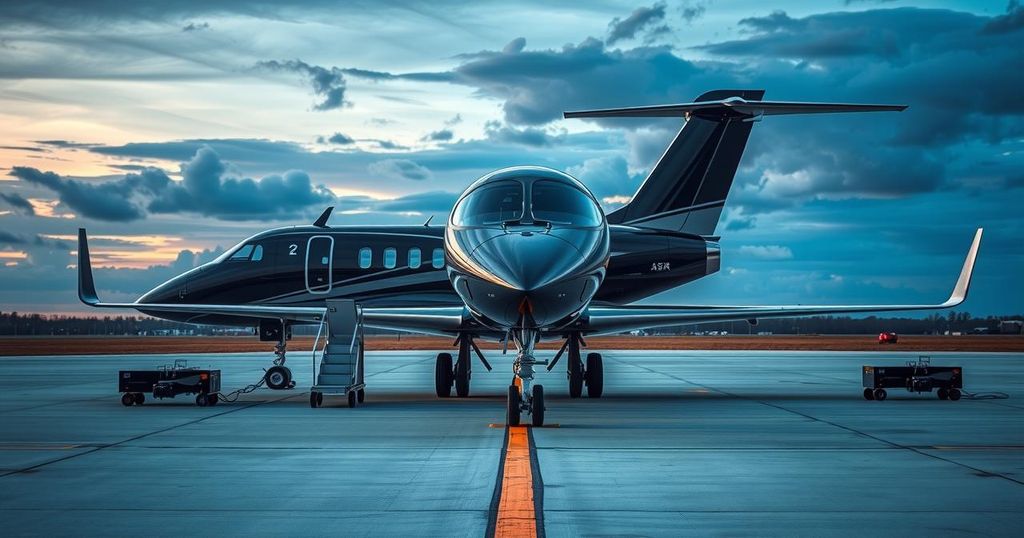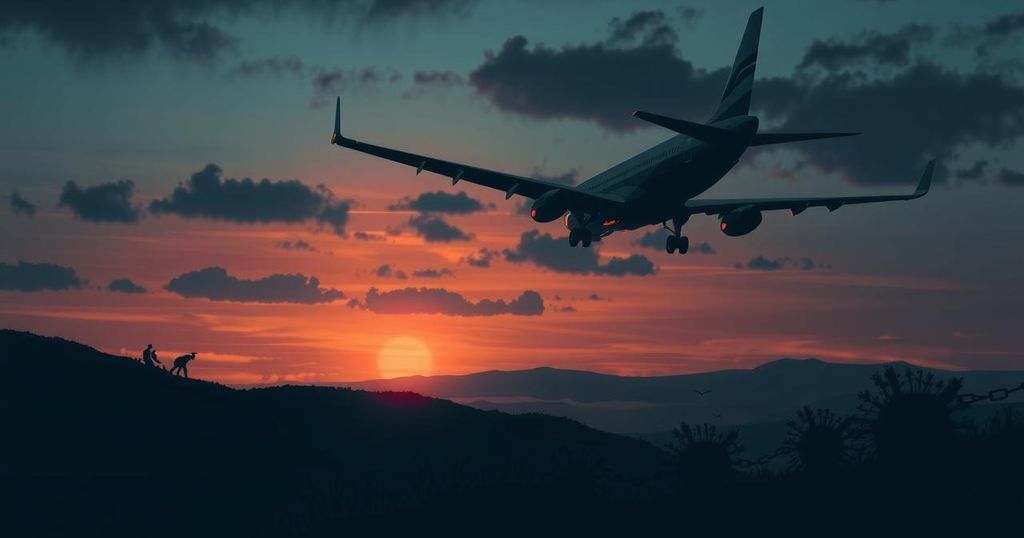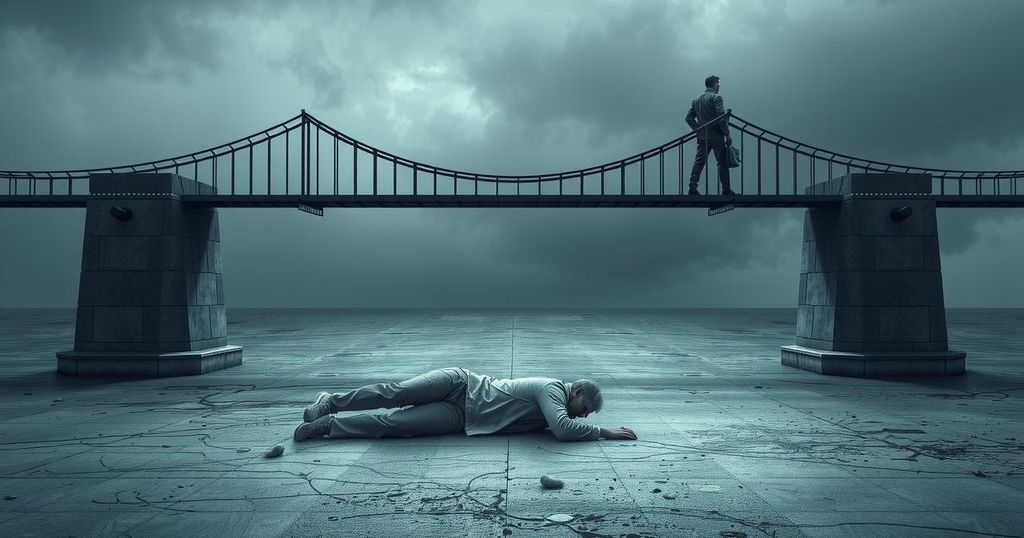World news
AIR FORCE, AIR FORCE ONE, AP, ASIA, BOEING, DONALD TRUMP, EUROPE, FRANKLIN D. ROOSEVELT, FREEDOM OF INFORMATION, IRAN, MILITARY, NATIONAL SECURITY, NORTH AMERICA, POLITICS, QATAR, TROY MEINK, TRUMP, TRUMP ADMINISTRATION, UKRAINE, UNITED STATES, WASHINGTON, WHITE HOUSE, YALTA
Marisol Gonzalez
0 Comments
What It Would Take to Convert a Jet from Qatar into Air Force One for Trump
The potential transformation of a luxury Qatari jet into Air Force One for President Trump raises significant security and financial questions. Modifications could soar to $1.5 billion, extending timelines, while Trump pushes for urgency. Concerns about the safety measures could result in compromises wider than usual protocols, creating a delicate balancing act. Meanwhile, Boeing faces production hurdles on the newly built 747 replacements slated for Air Force One.
President Donald Trump is eager to utilize an upgraded Air Force One, but achieving this goal raises complex security concerns. As government lawyers navigate the legal formation needed to proceed with acquiring a luxury jet from Qatar’s royal family, discussions on necessary modifications for presidential secure transport are also in motion.
Such modifications to achieve the security levels of the existing Air Force One jets, based on the decades-old 747s, could significantly escalate project costs and timelines—much like Boeing’s own struggle with delays and cost overruns on its replacement initiative.
Air Force Secretary Troy Meink informed lawmakers that the retrofit measures necessary for safety might hover around $400 million. He did not go into detail about these modifications. A White House official, speaking anonymously, noted Trump’s urgency to have the Qatari jet operational while still upholding security protocols, although specifics on timelines and equipment were not disclosed.
Trump’s awareness of security risks is evident, especially given two assassination attempts and threats from Iran. However, he seems willing to accept certain risks, particularly concerning communication safety—he has been known to carry his personal phone, despite the vulnerability it poses to hacking. This week, he remarked that the U.S. obtained the jet at no cost, asserting, “We need it as Air Force One until the other ones are done.”
The title of Air Force One is assigned to any aircraft transporting the president. Initially, that was a C-54 Skymaster used by Franklin D. Roosevelt in 1945. Today, the requirements are much more intricate; Boeing has invested years in customizing two new 747s with a hefty budget of $5.3 billion. However, these may not be operational prior to Trump’s departure from office.
A report released via the Freedom of Information Act revealed critical features required for the new Air Force One planes, with an emphasis on survivability and advanced communication systems. According to former Air Force Secretary Deborah Lee James, the decision to opt for four engines was made over a decade ago to guarantee the aircraft’s ability to remain airborne even if one or two engines fail, presenting logistical issues given the 747s are no longer being produced.
The crucial elements for Air Force One also include top-tier classified communication systems, anti-jamming features, and protection against surveillance. These capabilities enable the president to command military forces and nuclear systems during national emergencies amidst an array of potential threats, including radiation and electromagnetic pulses from nuclear events.
If the Qatari jet is to reach these standards, costs could swirl up to $1.5 billion and span several years. Meink, however, suggested these figures may be inflated, stating some associated retrofit costs would occur regardless as the Air Force continues constructing the new presidential jets, enabling spare parts and training planes.
In a counterpoint, U.S. Representative Joe Courtney estimated it could cost about $1 billion for necessary modifications, like installing secure communications and enhancing defenses. James highlighted the extensive rewiring required, noting it would necessitate dismantling much of the aircraft.
Interestingly, Trump, as the commander in chief, possesses the authority to bypass some of these stringent standards. He may opt out of some shielding systems that protect against electromagnetic pulses, thereby safeguarding his communications at the potential cost of security in crisis situations.
It is unlikely that Trump would want to compromise on aesthetics either. A model of the new Air Force One, boasting a darker hue in line with his personal aviation style, currently holds a place in the Oval Office.
In February, Trump personally inspected the Qatari plane parked near his Mar-a-Lago estate, accompanied by Air Force Chief of Staff General David Allvin. Sources indicate the jet requires maintenance, but nothing out of the ordinary for a complex four-engine aircraft.
Senator Tammy Duckworth from Illinois, a member of the Senate Armed Services Committee, expressed strong reservations about allowing the president to utilize the Qatari plane without assurance regarding its capacity to withstand grave threats, asserting it would be irresponsible and a misuse of taxpayer funds.
Meanwhile, Boeing’s progress on the replacement jets has faced obstacles, including issues related to stress corrosion cracks and excessive cabin noise. The Air Force indicated it is collaborating with Boeing to expedite the delivery of at least one of the 747s, yet the new aircraft will still require thorough testing.
Commenting on the situation, James noted that how Trump navigates these impending hurdles remains uncertain, but previous behavior suggests potential for overlooked delays to satisfy the president’s preferences.
In summary, transforming a Qatari jet to an operational Air Force One involves intense scrutiny over security upgrades and costs, with the potential for significant implications, both financially and for national security. Trump’s push for a quicker turnaround while adhering to safety standards creates a challenging balancing act, paving the way for possible compromises. With critical discussions continuing, the prospect of utilizing the Qatari aircraft remains fraught with uncertainty regarding both security and timelines, while Boeing’s ongoing issues further complicate the matter.
Original Source: www.thespec.com




Post Comment